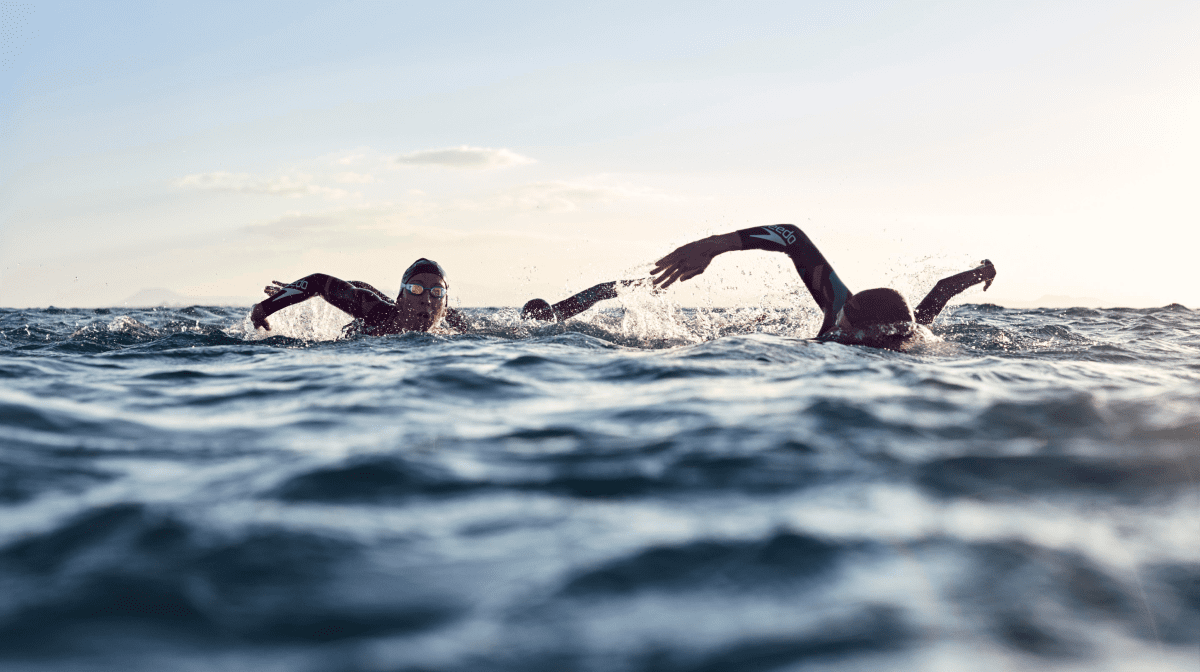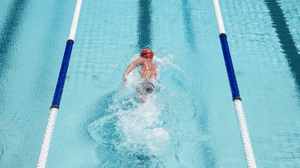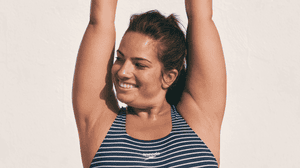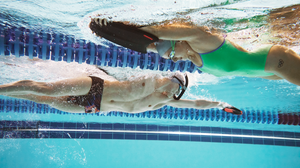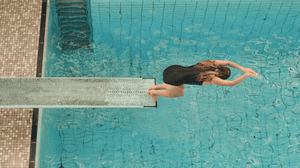
Triathlon swimming: To kick or not to kick?
When it comes to the swim phase of your triathlon, many coaches often advise against kicking with your freestyle stroke, using the idea of the impending bike and run to keep effort levels minimal – the theory being that the kick can be very damaging to your technique, unless performed accurately. The problem with the ‘no kick’ theory is that usually there is some kick, and it is rarely a good kick. Since the legs are long and strong it’s easy for them to overdo it. The fact that you can’t see them while swimming (if you can there are other issues!) means that it’s hard to accurately envisage their movements.
Less really is more when it comes to the kick (as long as it is a streamlined ‘less’!) An effective small kick is not going to be propulsive, but more importantly it will reduce the tiring, draining drag that poor technique creates. If there is no kick, the legs will sit low in the water. However, with a small, accurate leg kick, the down-beat will help them sit higher in the water, as long as the kick comes from the hip. Bear in mind that a two-way pivot at the knee will bring drag, require more effort and will have your legs sit lower in the water. This position, unfortunately, is easy to attain as it involves the strong quads and hamstrings. In comparison, the smaller, correct kick originates from the hip and is a much smaller movement driven by less utilised muscles.
Don’t rely on your wetsuit to improve your freestyle kick
If you’re under the belief that your wetsuit will remove the need to kick or help improve a poor kick, think again. The addition of a wetsuit will not stop you from kicking incorrectly. What it will do is lift you higher in the water, allowing you to relax more and be a little less frantic – although don’t be tempted to use this as an excuse to put off fixing your kick for yet another year in the off season. Unfortunately, even with the improved, wetsuit-aided body position, if you haven’t refined your kick, your arms will still be pulling a highly non-streamlined ‘back end’ through the water, limiting your top-end speed and making for a more tiring swim.
And if none of the above sounds like you, yet you’re struggling with your energy levels, it’s worth getting a second opinion from a coach or training partner. When I filmed a group of triathletes in a mini pool race, on watching the video none of them could believe how much they were kicking or moving their legs. In their heads they were all streamlined, swimming with hardly any kick movement or effort. This was because during their swim, the drag created slowly drained their whole energy system, so they were unable to pinpoint the main culprit and correctly identify what was wrong.
Tips for improving your freestyle kick in open water
When working to improve your freestyle kick for your triathlon swim, keep in mind the following pointers
Your big toes should brush against each other as you kick. The turned-in shape this creates increases the useable surface area at the feet. Plus, if the big toes are brushing together, it’s more likely the toes are pointing backwards and not to the bottom of the pool where they create drag. Use small but fast movements at the hip to generate more traction and contribute to your body position and rotation.
A knee-bend on the down-sweep is allowable but never on the up-kick. The leg should return to the surface in a straight position to reduce drag. Tip: Kicking with the hands on the glutes can help remind you to keep a straight-legged upsweep, as the gluteus will ‘fire’ and you can feel them working. A bent knee, on the other hand, works the hamstrings so the glutes will remain soft.
Freestyle kick technique drill
This is one of my favourite blocks of work to reinforce the concepts we’ve discussed regarding triathlon kick technique, it includes a wide range of kick drills over 100m without the need for isolated kick work. It is important to perform a sensible warm-up ahead of starting this ‘subset’ before moving on to your main set, and follow this with a cool-down
The drill
Swim 1 length of each of the four exercises below. We start out with a simple arm movement so that we can focus 100% on the legs. Slowly we rebuild towards the full arm stroke, hoping to keep that small flutter kick from the hip bubbling under the surface, all the while brushing the big toes against each other.
Try four sets of the following 100m swim (25m pool – total 400m). Attempt the first two 100m swims with fins, then remove for exercises 3 and 4.
- 1 length breaststroke arms with freestyle (front crawl) legs – this will help promote a continuous leg kick.
- 1 length ‘10 kick catch-up’ (10 kicks between each single-arm freestyle stroke).
- 1 length catch-up where the hands touch and then perform a single arm stroke.
- 1 length full stroke.
Slowly we reintroduce the arms back to normal ‘turnover’, hoping that the corrected kick that we perfected during the simple ‘breaststroke arms and freestyle legs drill’ remains in place.
Top triathlon kick technique tips to remember
The kick should come from the hip and should be a tiny movement that will not fatigue you.
The big toes should brush against each other during your kick. Liken the scale to the movements of a pendulum: tiny at the point of origin, getting bigger as the energy travels down the legs to the feet.
Practice this on dry land to help accelerate your learning.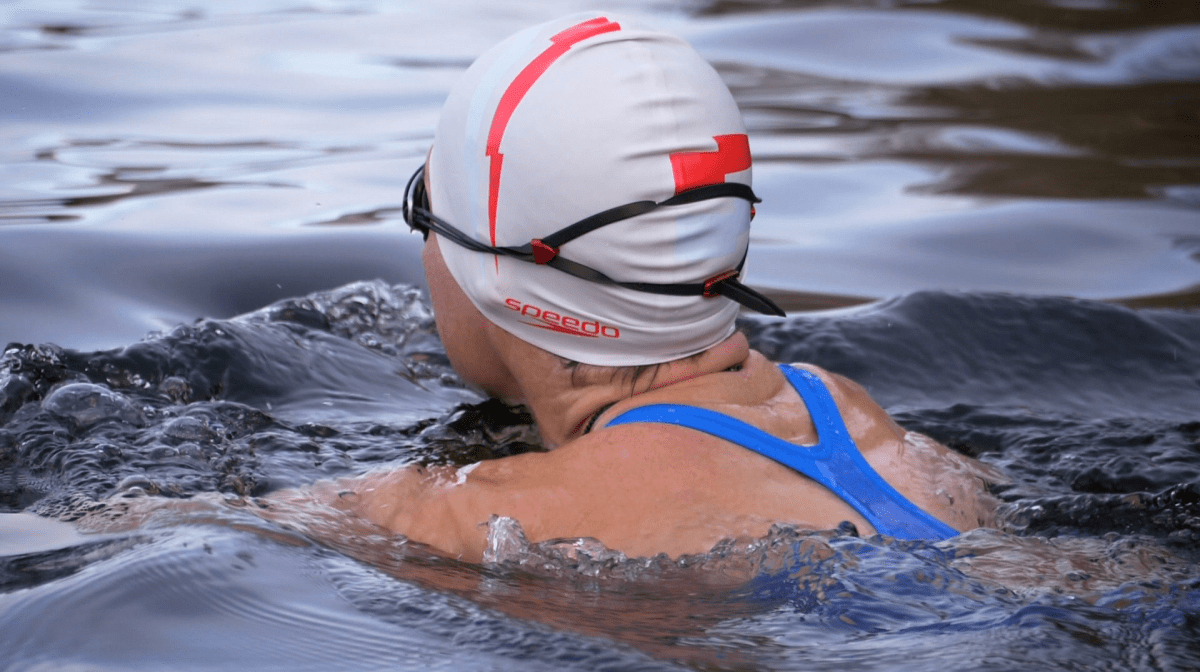
Open-water Triathlon Breathing Techniques
Despite what the text books may tell you, bilateral breathing is not your only option when swimming in open water.

Related Articles

